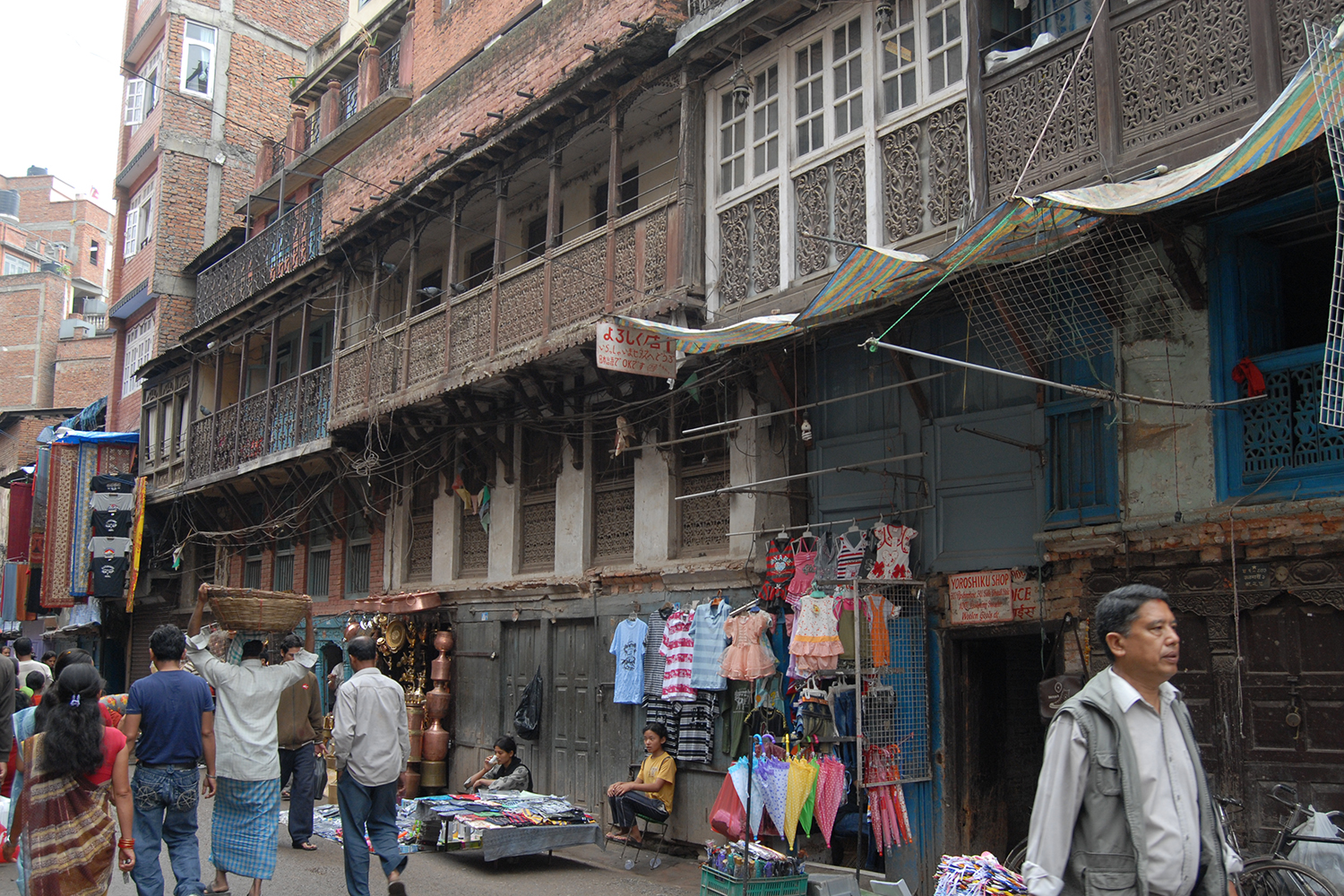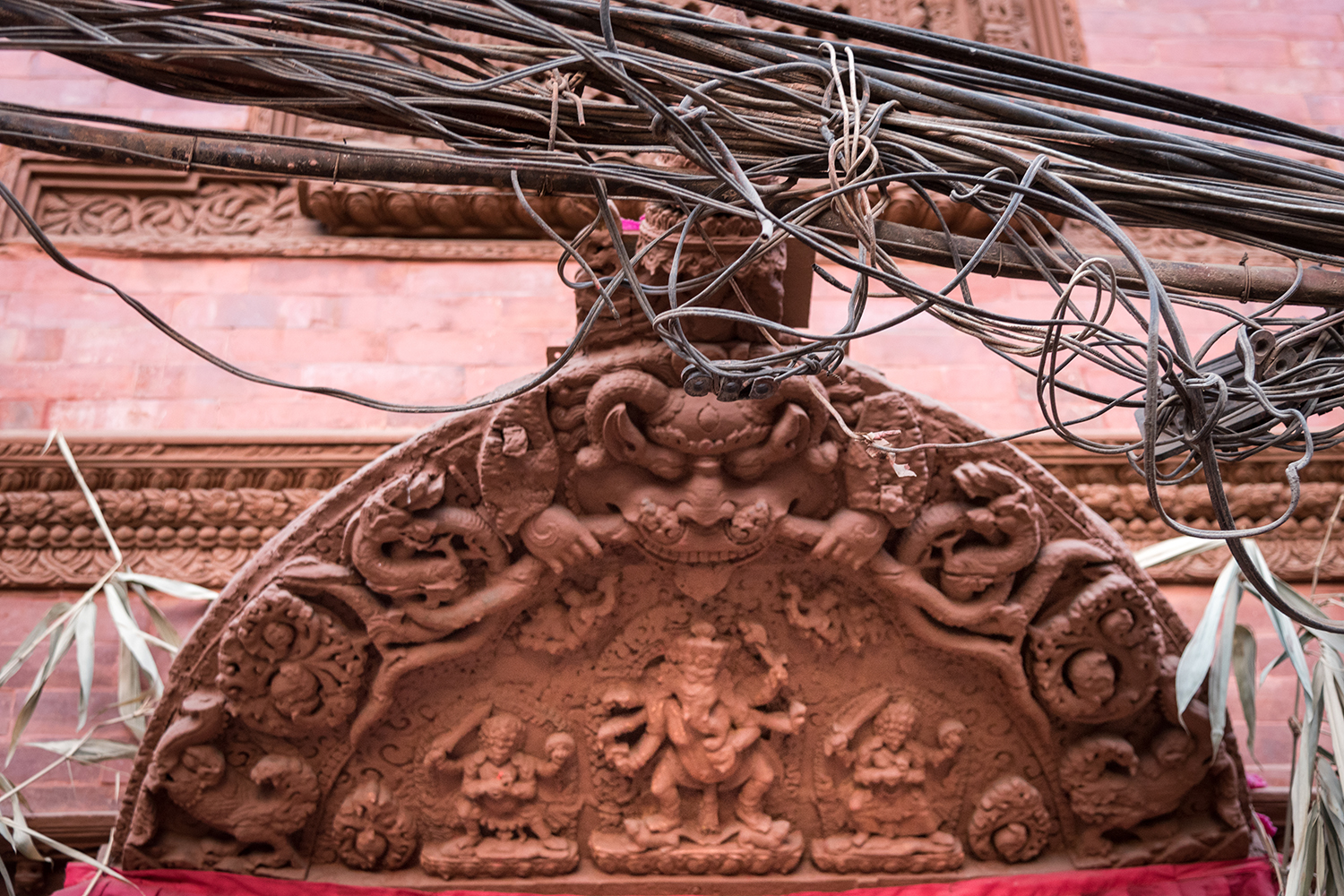Kathmandu’s passage of time in photos

Nepal is known the world over for its majestic mountains and historic monuments, but for American development worker Scott Faiia there are two more reasons why Nepal is irresistible: “The people are very amiable, and they smile a lot.”
Turn to any page in his picture book Changing Kathmandu and this is evident: children and the elderly are captured in a state of sincere bliss without affectations. What is more, Faiia follows the same people in the same places over the decades, as a visual record of the passage of time.
In a neighbourhood in Bhaktapur, Maiya Shahi sits in her fruit shop in her black-and-red haku patasi garb. The year is 1992, and she is turning a cotton wick in between her fingers. Faiia returns to the shop in 2009 and 2018 – besides fruits she now also sells clothing and other merchandise. Despite the intervening 26 years, the shopkeeper still looks directly at the camera with the same spontaneous smile.
Portrait of a photographer in rural Nepal, Monika Duepala



Change is the central theme of Faiia’s meticulous repeat photography. Ever since 1988, the former Nepal country director of Oxfam has seen the Valley transformed. Neighbourhoods have become unrecognisable, neighbours have moved on.
The undulating mustard fields of Chobhar have been turned into an amusement park. The crisp view of the Boudhanath stupa as seen from Gujeswori is now obstructed by a concrete jungle, and a layer of smog.
“Life and places are not static,” he says. “But the problem with Kathmandu Valley is that the changes are unmanaged and out of order.”
This is evident from the pictures of Asan road photographed in 1988, 2009 and 2018. The changes are dramatic, with the fronts of the houses dangling with mannequins, people peep out of the windows with a sense of loss.
Making Nepal’s history colourful, Kanak Mani Dixit



Still, many things remain the same in this eternal city. The people Faiia follows have grown older, frailer in some cases, but still flash that happy smile. Concrete high rises have come up, but the city cores of Bhaktapur and Patan have been built back better after the 2015 earthquake.
Faiia is not against development, his work documents progress as well.
The enamel on a carved torana of a Ganesh temple in Patan has been removed to reveal the original texture of the wood. The Akash Bhairab temple in Indra Chok has been restored. And in the midst of it all there are always people, devotees, shoppers, children returning from school, witnesses to the transformation -- all smiling.
Nepal’s past, present and future in a photo, Bhumi Ghimiré


The enamel on a carved torana of a Ganesh temple in Patan has been removed to reveal the original texture of the wood.
Meme is a resident of Bouddha, and when Faiia first photographed him looking out of his window in 1988, he was 47. The photographer went back to take pictures of him again and again in 2008, 2017 and 2018.
“When I went to see him again in 2017, he opened the door, asked me to wait, went inside and brought the picture I had taken of him in 1988,” Faiia recalls.
Each of the added years brings out in Meme a deep sense of contentment with life. His eyes have seen everything, but they are not tired. In fact, they look beyond to the future, anticipating further transformations.
The first photographs of us, Kanak Mani Dixit


The Ganesh Mandir in 1991 (left) and 2009 (right).
Faiia did not receive any formal photography training, and it is a personal hobby he took up as a way “to keep balance in life”. During his time in Ethiopia in the 1980s, the country was going through the horrors of a civil war and famine. He was managing food distribution for millions of internally displaced people, and Faiia lost several of his own staff.
“It was very grim. Photography was a way for me to get away from the violence,” he says, “not to connect the dots in a war but to turn my attention to something else.” It was his Nikon that helped him find beauty and meaning in the world’s other trouble spots where he has served: Somalia, Sudan, Haiti.
Faiia first came up with the idea to do a picture series of the same people and places of Kathmandu Valley when he was going rummaging through some old boxes of prints. “I found many old photos that I had taken in the past and the idea was born,” he says.
Read also: Photojournalism looking for solutions, Min Ratna Bajracharya
writer




